"Smart Growth" and "New Urbanism" Compared with "Large Lot Zoning" (Tom Lane) [ Home Page – Click Here]
(May 17, 2017) – Traditional "Large Lot Zoning" is "Greener" than "Smart Growth" within Urban Growth Boundaries . . . Copyright 2009 – 2017 . . . Tom Lane . . . Photographing California, Arizona, Nevada, New Mexico, Colorado, Utah, Oregon, and Seattle, Washington.
(Feb. 28, 2011, Dec. 23, 2011) Clearcutting for Smart Growth in Seattle; vs. Green Neighborhoods in Arizona and Oregon
Above: Port Blakely Construction’s Issaquah Highlands Master Planned Smart Growth Development still under construction in Summer, 2010. Not many native trees left; towering massive walls; see photos below as well.
(February 28, 2011 and December 23, 2011, Tom Lane) I think smart growth makes some good points (i.e. bike friendliness and walkability). Yet smart growth policies are regressive when they increase congestion, clearcut native trees, and fail to conserve native trees during construction.
Elsewhere, I’ve produced photo essays of Issaquah Highlands in Seattle at this link and also below, and Northwest Crossing in Bend, Oregon at this other link, two neighborhoods that take very different approaches to native trees.
I’ve also included photos below of cities that preserve their natural vegetation, including Bend, Oregon, along with Cave Creek, Sedona, and Flagstaff, Arizona.
To me, a neighborhood should be pleasing to all five senses, full of large trees, flowers, birds, butterflies, and hummingbirds, with birds of prey flying overhead. However, many smart growth (and other) subdivisions choose to clearcut native trees before construction, and then replant with non native plants … or worse – cover everything with gravel (aka gravelscaping, in Arizona).
Fortunately, not all recent smart growth developments feature small lots, limited setbacks, and clearcut trees, including many in Oregon and Arizona. Check out Northwest Crossing in Bend, Oregon where they retained the native Ponderosa Pines, even to the extent of curving otherwise straight sidewalks around them.
For the Bend, Flagstaff, Sedona, and Cave Creek photos, I intend to write an additional post on cities in Arizona and Oregon, that require preservation of native trees during construction.
Seattle: Issaquah Highlands, Talus, and Snoqualmie Ridge Clearcutting
The situation is very different at Issaquah Highlands, Talus, and Snoqualmie Ridge, the Seattle smart growth master planned developments. At the highlands, Timber company Port Blakely came in and destroyed much of the native vegetation, paving it over with roads and high density homes on tiny lots and townhomes with no lots.
As a result, the area is devoid of native trees, and 90% of surfaces are paved or gravel. Privacy is non-existent, even between individual homes.
It only takes the uninitiated five minutes of driving through a “Smart growth” place such as Boulder or the Issaquah Highlands to note that these places are polluted, crowded, expensive, and disconnected from nature.
It is becoming increasingly more difficult to find communities who maintain native trees during construction. At the end of this post, I’ve added some photos of this.
What Issaquah Highlands does is to relegate native trees beyond their developments. For example, this photo shows some townhomes a few hundred yards from the edge:
Their regional trail system is on the edge of the development, shown below. There are few if any native trees within the development. It’s similar to Boulder or Denver, where there are no native trees. The eastern slope of the Rockies are on the Great Plains. The only trees you see are those that have been planted. As a result, the area turns brown in the winter, similar to Issaquah Highlands. Port Blakely (a multi-national timber company) should have left some native Douglas Firs for green year round. Regional trail system:
Here’s a view of the Issaquah Highlands smart growth development, on clearcut land on the distant Douglas fir covered hill, and the horseshoe shaped development east of Issaquah. This photo was taken from the top of the Talus master planned smart growth development.
Here’s a similar view, along with Interstate 90 and towering cranes constructing a high rise medical tower, from the Issaquah Cemetery, looking east:
And, here’s a view of the high rise medical tower and the clearcut, looking north, from the shoulder of Interstate 90:

Clearcut visible from Interstate 90 east of Seattle, for the Issaquah Highlands smart growth medical tower.
And, the story would not be complete if I did not show the mysterious Issaquah Highlands walls. What are these for? Note the clearcut of Douglas Firs behind the towering condos (with barren trunks on the lower part of each tree):

Issaquah Highlands Massive Wall and Towering Condos, with Clearcut Douglas Firs behind the smart growth condos.
Another view, approaching Issaquah Highlands from the development’s very own 6 lane boulevard extending from Insterstate-90:
Overall, developments such as Issaquah Highlands, Talus, and Snoqualmie Ridge represent ugly, towering, three story+ condos with no yards, no native trees, no wild birds, no room for vegetable gardens, heavy traffic, and dark alleys of garages.
Horrible, uninviting, bad air quality, and very expensive.
I think these so called smart growth areas represent the worst examples of sprawl. The developments and their associated traffic are a cancer upon the otherwise pristine forests in the Mountains to Sound Greenway along I-90 (extending east from Issaquah).
Further east, there has been complete native vegetation obliteration, at Snoqualmie Ridge. The development is shown in a series of two posts: click here, and also here.
Here are two photos of the clearcutting:
This one is at Talus. This areas hasn’t been developed. Douglas Fir trees have barren lower limbs when adjacent trees have been destroyed. And, you can see through this narrow strip of trees, indicating clearcutting on the other side.

Clearcutting on both sides of this strip of Douglas Firs in the Talus smart growth development in Issaquah.
Another common element to these developments are expensive walls with 45 degree slopes, supposedly allowing for development on steep lands. These expensive walls are unnecessary in a climate and soil types not subject to frequent landslides. Many homes in the very hilly Seattle area are carved into very steep slopes (i.e. south Bellevue and Newport Hills). Again, to construct the walls, native vegetation is cleared. Here are some walls in Snoqualmie Ridge:
Here’s another hew development that’s been both clearcut and terraced, and it looks ridiculous. This is Edgeview in Bonney Lake, Wa. These stairs are very dangerous for anyone cycling or skateboarding at the top of the hill, who doesn’t stop before the edge of the stairs. Ridiculous.

Over 20 acres CLEARCUT for Edgeview, with a 50 foot wide street including the sidewalks and planting strips. Yellow tape measure is 25′ long.

Most wheelchairs, cyclists, and skateboarders will not notice the sign. There are about 100 stairs below. Ridiculous.
I’d rather see the native forest along the I-90 Greenway maintained during construction, instead of clearcut for smart growth developments. Before the smart growth movement, that’s how developments were constructed in Seattle. Even today, many older suburbs around Seattle have tree ordinances, requiring permits to cut down old Douglas Firs, that by now (2010) have achieved Old Growth age.
Birds of prey fly above these neighborhoods, and songbirds can breed abundantly. Below, a photo of the Coast of Puget Sound and Mt. Rainier at sunset, where neighborhoods are nicely secluded within large Douglas Fir and Madrona trees. The photo starts with Three Tree point (Burien) where I’m standing, then Normandy Park, Des Moines, and Federal Way:
And, looking the other direction from Three Tree Point in Burien, here’s the Olympic Mountains, west of Seattle at sunset. Again, the entire slope is covered with huge Douglas Firs and Madronas:

Olympic Mountains from Three Tree Point at sunset (and flagpole). Lots of native Douglas Firs and Madrona trees.
The Issaquah Highlands Smart Growth “Sprawl Lobby” from the Democrat Party
The Issaquah Highlands development was developed by a “coalition” that is essentially, for all practical purposes, a “sprwal lobby.”
In this case, I mean a “smart growth sprawl lobby.”
The Issaquah Highlands lobby (“coalition”) involved many people – mostly Democrats – involved in Seattle Home Construction, including Al Gore, Microsoft, Swedish Medical Center, former Seattle Mayor Gregory Nickels, Former King County Executive and now Deputy Sec. Housing & Urban Development Rev. Ron Sims, Port Blakely Timber / Construction, the City of Issaquah, the Puget Sound Regional Council, and special interest groups including 1,000 Friends of Washington, the Mountains to Sound Greenway Trust, and the Cascade Lands Conservancy.
Now that’s a true lobby! Lots of behind the scenes activities, and big money from government agencies, Microsoft, and Port Blakely Timber, and name recognition by way of Environmental Awards presented by way of LEED and Al Gore.
Seattle Times Articles on This Smart Growth Sprawl Lobby
I can demonstrate this with a series of articles in the Seattle Times. Most people would be outraged if they knew about smart growth plans behind the scenes. Most people want yards. Most people don’t want to walk to the grocery store. It’s human nature … people prefer privacy … large lot sizes with large native trees and gardens. They do not like crowded smart growth condos and townhomes. There is plenty of land along I-90 from Seattle to Ellensburg, Washington, to give everyone an acre of native forest, for a cabin in the woods. Here are examples delineating the coalition:
http://seattletimes .nwsource. com/html/ opinion/20084492 26_opin29simseta l.html
http://community. seattletimes. nwsource. com/archive/ ?date=19990228&slug=2946765
http://community. seattletimes. nwsource. com/archive/ ?date=19991207&slug=2999926
http://seattletimes .nwsource. com/html/ localnews/ 2003835247_ urbanvillages14e .html
http://community. seattletimes. nwsource. com/archive/ ?date=20031227&slug=sullivan27m
http://community. seattletimes. nwsource. com/archive/ ?date=20031101&slug=trail01e
Ironcally, many members of this coalition are Democrats. Until recent years, many Democats in Washington and Oregon were often opposed to large master planned communities. Suddenly, this has changed, with the addition of the smart growth paradigm. Of course, timber and construction companies such as Port Blakely generally receive support from the Republicans. This was an exception, as the King County Democrat party leaders compromised their own Conservation principles to join with Port Blakely to cut down native trees.
The leaders of the Democrat party need to explain why they are suddenly no longer the party of conservation, when it comes to these precious urban forest lands that reduce our stress level and benefit our children’s health. Not one child in the development will ever be able to build a treehouse, or play baseball in their own backyard.
That is one reason why the Democrat party has lost my vote this fall. As a conservationist, I will try to find candidates who wish to conserve the forest – desert interface in my neighborhood. That party is no longer the Democrat party.
Generally, the Timber companies are Republican, since Republicans in office have been more pro-logging than Democrats. Therefore, suddenly, we see a massive paradigm shift … the Democrat party now favors destruction of natural vegetation in urban environments, by way of Republican timber companies, in order to build high density housing with no lawns and no yards.
Look at the mess of Port Blakely at Issaquah Highlands, with dead and dying trees and brown grass, and starving Canadian geese foraging in brown grass.

Unhealthy dead and dying trees and brown grass at Issaquah Highlands, a Port Blakely Master Planned Smart Growth development, near Seattle.

The Canadian Geese have no other place to go after Port Blakely makes most surfaces impervious, and most native plants are destroyed!

Issaquah Highlands retention basin, reflecting the smart growth. The geese could go in here, but it’s not prime habitat, lacking native wetland vegetation such as cattails, willows, serviceberry, elderberry, red alder, black cottonwood, and others.

With the dead brown grass and no native trees, these “cookie cutter” Issaquah Highlands townhomes look like they’re in Eastern Washington, not wet Western Washington.
Proper Tree Removal and Preservation During Construction
Sadly, because of the widespread lack of rules enforcing tree preservation during construction, it’s hard to find proper tree removal practices during construction.
This photo shows proper treecutting in a forthcoming development in Renton, Wa. Much of this was dangerous alder and cottonwood, which are brittle and dangerous during Washington State winter storms. Therefore, some had to be removed. However, they left some of it, and retained cedar trees that are much stronger:

Proper residential tree management. Many of the hazard trees removed (Alder and Cottonwood). Stronger Western Red Cedar trees preserved.
This new home features preserved mature Douglas Fir trees in the front yard of a large lot on the border of Renton and May Valley:

Mature Douglas Firs preserved in the large front yard of this nice home under construction on the border of Renton and May Valley.
This gorgeous very pure stand of Red Alder along a driveway in High Valley (east of Renton) can be preserved since the stand is not as hazardous, since it’s of the same age, among other factors. When Red Alders, Bigleaf Maples, and Black Cottonwoods of different ages are randomly scattered on a property, they must be inspected by a certified arborist.

Pure stand of Red Alder on a driveway in the High Valley neighborhood east of Renton. This stand is not as hazardous since the trees are the same age, among other factors.
Mirrormont, in East King County, has left native second growth timber, and, old growth stumps in place, in its park along this trail:
I’ll add more photos as I find them. Here are more native second growth trees in the Hilltop large lot neighborhood in Bellevue. Most of the streets have a nice buffer zone of native trees, providing privacy for very large lots.

Native trees form a buffer between the street and large lots in the Hilltop neighborhood in Bellevue.
Cities that Require Preserving Native Vegetation, By Law
I will write a separate post on Cities that require developers to maintain native vegetation during construction, such as Bend, Oregon and Cave Creek, Arizona.
Flagstaff and Sedona, Arizona have also retained natural vegetation in many areas of town, although I am not sure if this is required by law.
Certainly, large trees throughout a city help to mitigate the effects of “sprawl.” For example, trees obscure homes and office buildings, and also sequester air pollutants and greenhouse gases. They also reduce the urban heat island effect, and help to absorb runoff that otherwise overflows sewer systems.
The benefits of trees are endless, as any urban forester can explain. Indeed, if I was an urban planner, the first thing I would do is hire an urban forester.
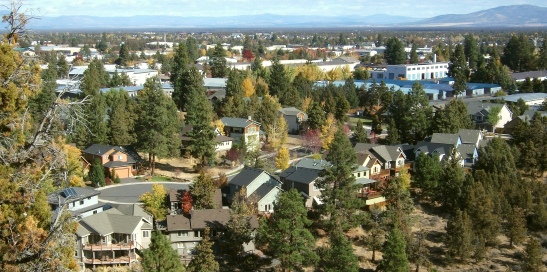
Native vegetation (Ponderosa Pines, Western Juniper, and others) must be preserved, by law, in Bend, Oregon.

Cave Creek, Arizona looking north. Gravelscaping is banned, and sidewalks are not permitted. Every square inch of the Sonoran Desert is highly valued, and even grows over the road. Very nice.
Note that the minimum lot size in Cave Creek, Arizona in one half acre, and buildings in Cave Creek are limited to two stories (no smart growth towers). On this chart, the smallest permitted residential single family lot, 18,000 square feet, is equivalent to half an acre – PLEASE CLICK TO ENLARGE within your web browser –

PLEASE CLICK TO ENLARGE within your web browser – Cave Creek, Arizona Zoning. The smallest permitted residential single family lot, 18,000 square feet, is equivalent to half an acre.
Here’s the Chamber of Commerce’s map of both Cave Creek and adjacent Carefree, Arizona:
Cave Creek even bans gravelscaping.See their web site:
http://www.cavecreek.org/index.aspx?nid=316, Accessed December 9, 2011
Creekers can enjoy attractive landscaping that complements its surroundings. Plant selection is key to conserving precious water and protecting the beautiful Sonoran Desert.
The Town employs strong measures to assure developers and homeowners coexist with the desert. This includes conserving part of lots as undisturbed desert and allowing only suitable plants in other areas. The iconic saguaro cactus is protected not only by the town but by state law.
Newcomers should learn their responsibilities as desert stewards — wildlife depends on those who choose to live here. Existing residents can nuture the desert by removing invasive species and avoiding destructive practices such as covering desert areas with gravel, which prevents native plant propagation. Xeriscaping uses plants that consume little but rainfall. This saves money and conserves water.
Here’s a view of the Town of Cave Creek, Arizona, looking Northeast:
Gravelscaping in Arizona and The West
Since most areas of Phoenix, and most large metros in Arizona (other than Cave Creek, Sedona, Flagstaff, and a few others), choose to remove the native Sonoran Desert vegetation prior to construction and replace them with gravelscaping, then those who oppose development and sprawl look at photos such as this one. Even many smart growth proponents favor gravelscaping over conserving native plants. This neighborhood in Phoenix, and this view from an airplane looks horrible, since unlike Cave Creek, they have removed the natural vegetation, replacing it with gravelscaping:
Flagstaff, Arizona – Native Ponderosa Pines
Finally, a few photos from Flagstaff, Arizona. Unlike Bend, Oregon and Cave Creek, Arizona, I don’t know if they have a law that prevents developers from removing native Ponderosa Pines and Pinyon Pines.
The first photo in Flagstaff, Arizona shows the Woodlands Village mixed use area, with homes, offices, multi-family housing, and commercial conveniences, all surrounded by native Ponderosa Pines.
This brochure for the Arbors complex in Woodlands Village shows how native ponderosa pines have been preserved. Indeed, many studies show that maintaining natural vegetation increases the amenities for a neighborhood (just as the brochure says). Furthermore, native trees increase property values. So why don’t the “smart growth” folks stop their clearcutting, and start making beautiful neighborhoods like in Bend, Flagstaff, Cave Creek, Carefree, and Sedona, Arizona? They are hypocritical and it is a real tragedy.

PLEASE CLICK TO ENLARGE within your web browser. Flagstaff brochure for a condo complex that preserves native trees in the aforementioned mixed use Woodlands Village subdivision where native ponderosa pines are preserved.
The City of Flagstaff is surrounded by national forest land and urban growth boundaries. Perhaps that’s why the City boundaries end in right angles in the neighborhood map below. Many other neighborhoods preserve native pines, but you guessed it, home prices are through the roof due to the urban growth boundary.

PLEASE CLICK TO ENLARGE within your web browser. Neighborhoods of Flagstaff in a real estate section in “The Arizona Daily Sun,” September, 2009.

Flagstaff, Arizona, where the terrain, volcanic geology, sedimentary outcrops, Ponderosa/Juniper vegetation, scenery, and patterns of tree preservation, are probably very similar to Bend, Oregon.
More from Cave Creek, Arizona web site, Accessed December 9, 2011
http://www.cavecreek.org/index.aspx?nid=311
Welcome, newcomers! If you’re joining us, welcome to the Valley’s genuine rural town. Cave Creek values every square inch of the Sonoran Desert, which is why most homes don’t have sidewalks or gravel yards. No municipality in the metro area comes close to our acres per capita of open space, home to an amazing variety of plants and animals, including wildflowers, saguaro cacti, javelina and Gila monsters.
In Cave Creek we breathe fresher air. At night we are treated to a stunning display of stars thanks to dark sky protection against light pollution. Trails abound for horse riding, off-road biking and hiking.
If you live in an area zoned Desert Rural, you will become the newest steward of the desert when you move in. Wildlife depends on those who choose to live here. You are responsible for protecting parts of your lot that are left intact, known as Native Habitat Corridor and Natural Buffer Area. That means no trimming branches, leaf-blowers or gravel. Please learn your responsibilities below. Thanks for helping protect the Sonoran Desert.
First step:
Learn how to live in the desert without harming it
Please take a few minutes to learn about living in the Sonoran Desert. You may be surprised at facts few people know — and at misinformation from urban legends concerning our wonderful ecosystem.
Much of desert stewardship involves landscaping. Creekers can enjoy attractive landscaping that complements its surroundings. Plant selection is key to conserving precious water and protecting the beautiful Sonoran Desert.
The Town employs strong measures to assure developers and homeowners coexist with the desert. This includes conserving part of lots as undisturbed desert and allowing only suitable plants in other areas. The iconic saguaro cactus is protected not only by the town but by state law.
Resident responsibilities include removing invasive species and avoiding destructive practices such as covering desert areas with gravel, which prevents native plant propagation. Xeriscaping uses plants that consume little but rainfall. This saves money and conserves water.
Next steps:
Eliminate invasive species
Learn to identify invasive species and remove them. Invaders must be avoided because they can spread into surrounding land and destroy the ecosystem by choking out natural species and fostering wildfires. When selecting plants, choose one from list A or C on the town’s approved plant list (link below).
Here are six common invasives:
http://www.scottsdaleaz.gov/Assets/Public+Website/bldgresources/invasiveweeds.pdf
A longer list:
http://www.saguaro-juniper.com/i_and_i/invasive_spp/invasive_plants.html
Learn before designing new construction or landscaping
Learn about town zoning ordinances that affect your landscape before you design it. If you use a landscape architect or firm, please assure they understand town rules. Many don’t.
Unless you know it already, educate yourself on responsible desert stewardship. How many of these did you already know?
— Never plant fountain grass, any seed-producing variety of bermuda grass or other invasive species that could spread beyond your property and out of control.
— Don’t remove incubator plants, those scrubby two-foot guys with burrs and gray-green leaves. They are essential in the life cycle for certain cacti including saguaros.
— Watering can kill cactus, even a towering saguaro. They are sensitive. Changing drainage or diverting a stream that flows during rains can destroy a large swath of desert growth.
— Cacti mainly grow in the summer. Never water them in the winter; native species never require watering.
— Only certain types of mesquites, palo verde trees and other trees are indigenous. Pick native varieties that match ones in your area, such as velvet mesquite instead of Chilean mesquite. Most palo verdes here are foothills variety.
— Only tiny doses of fertilizers are tolerated by sensitive cacti. Research before you use fertilizer.
Four zones in Desert Rural property
Desirable plants and prohibited species for each of the four zones are listed in the link below. Palms, pines, olives and mulberry trees, for example, are prohibited along with invasive species.
— The native habitat corridor, or Zone A, includes the 12 feet inside the boundary of your lot. It must be left alone. That means no leaf-blowers and no trimming branches or shrubs. Even dead leaves and branches play a role in the complex ecosystem.
— The natural buffer area, or Zone B, is the land between Zone A and the building envelope (the buildable area where your house sits). This area also must be kept natural. Limited debris clearing and trimming may be allowed with prior town approval, along with restoration of destroyed desert.
— Transitional area, or Zone C, is the portion of buildable area that lies between Zone B and a wall or building, so it’s visible from the street or a neighbor’s home.
— Zone D is private area, shielded from public view.
Chapter 12 of the zoning ordinance, including lists of approved and prohibited plants:
http://www.cavecreek.org/DocumentView.aspx?DID=121
The preceding from the Cave Creek, Arizona web site at the link above.
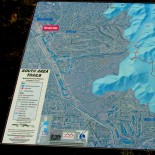
















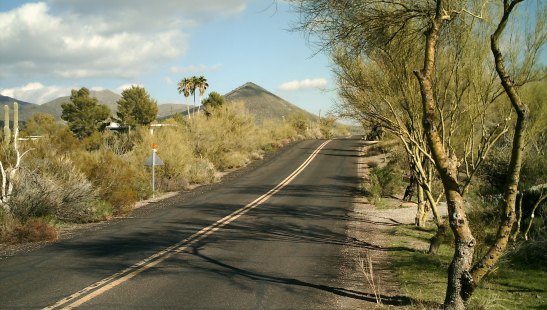








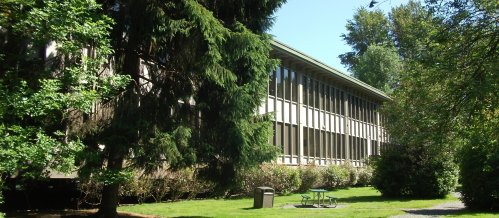
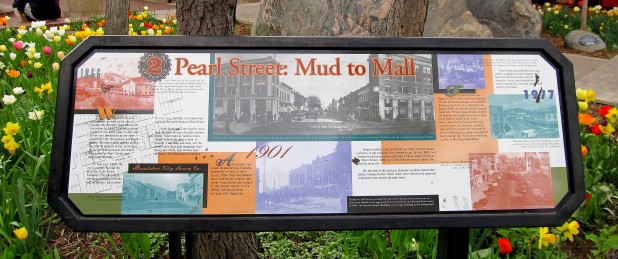

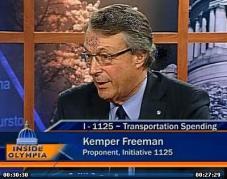

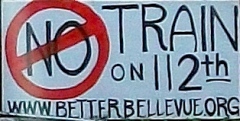




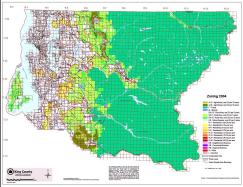
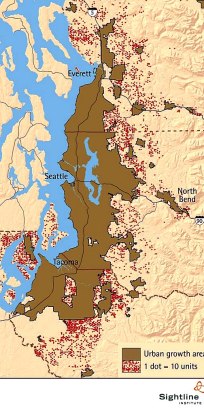
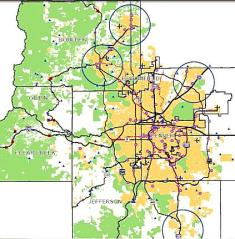
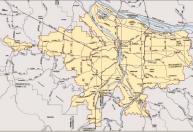
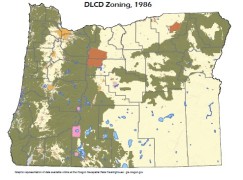
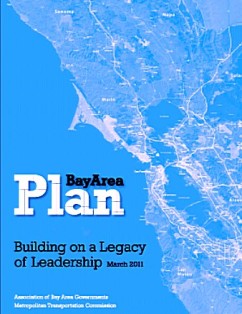

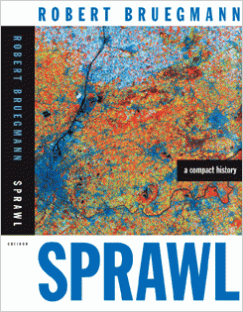

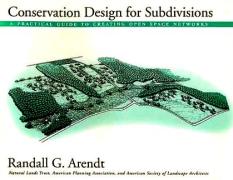

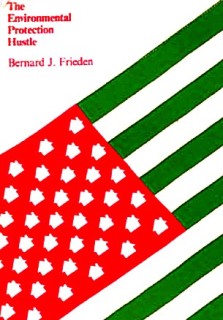

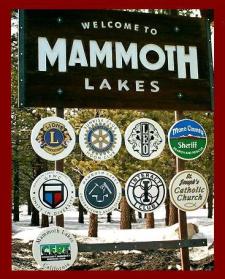
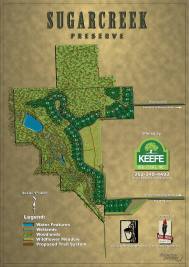

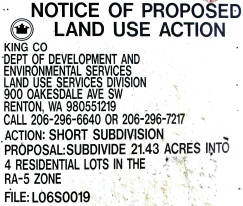
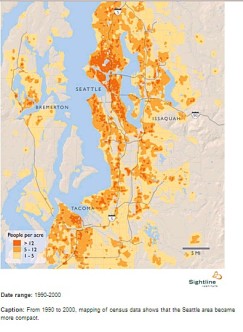

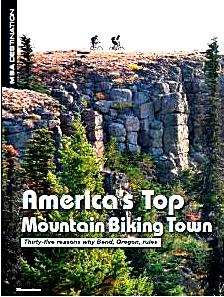
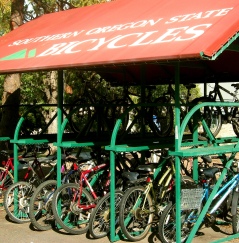

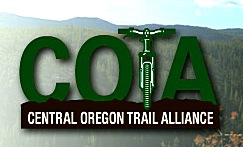

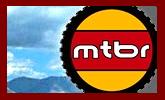




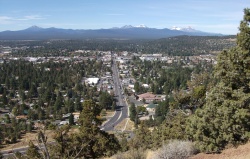
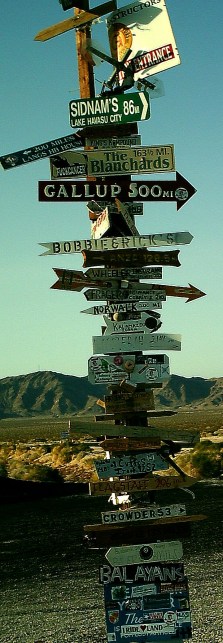
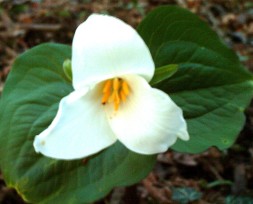


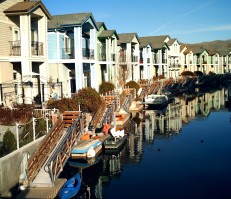


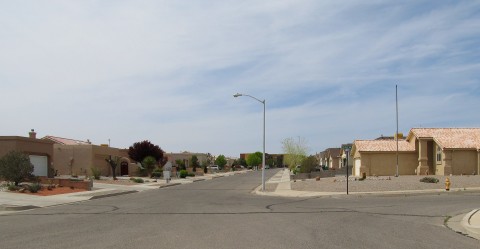
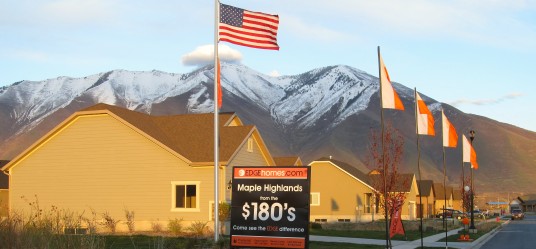
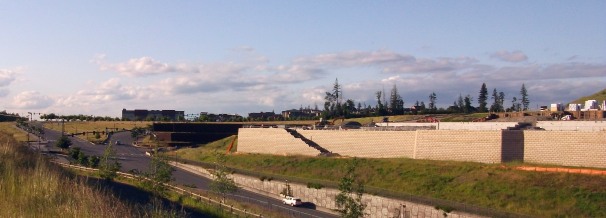


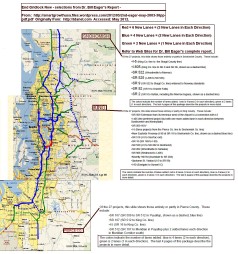
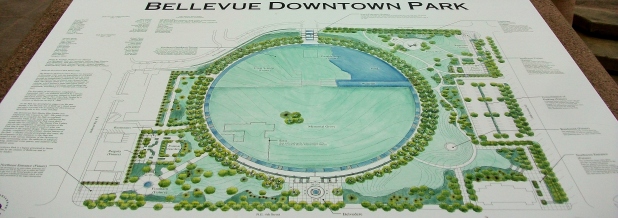


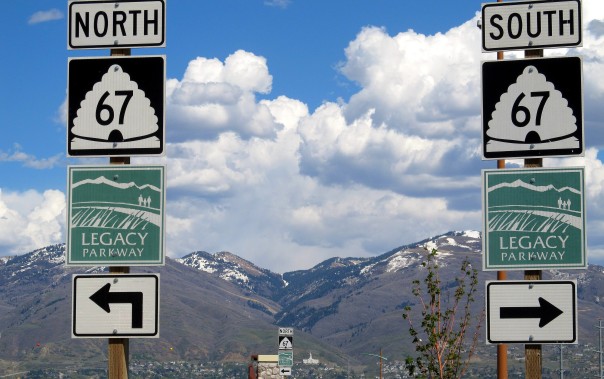
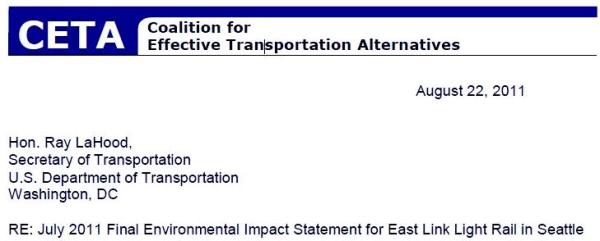
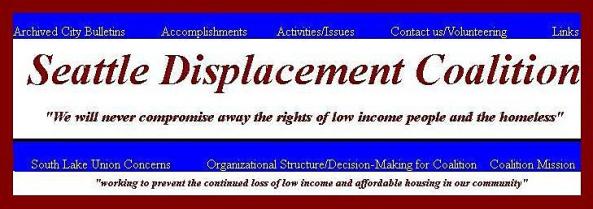
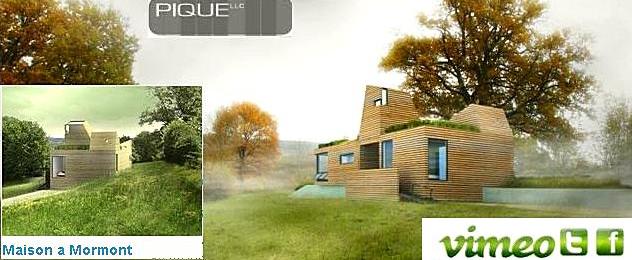


Hi, I love your photos of the Issaquah Highlands! Actually I should say that I wish you never had the opportunity to take them. I am Connie Marsh, currently the president of the Issaquah Environmental Council and I am enjoying your website because I think much of this smart growth is just an opportunity to fillet the land and be smug. That aside I am making a string of videos to try to raise the awareness of Issaquah-ites on the Central Issaquah Plan and would love to be able to use some of your images if possible.
I have popped some on youtube. Here is a link to one: http://www.youtube.com/watch?v=id2_eViAVK8
Whatever you think. Appreciate your time.
Connie,
Thank you for the information and the link. I have emailed you about the photos and agree with your position against the Central Issaquah Plan. Here’s your web site – http://www.issaquahaction.org/Current.htm
Here’s a recent article on your group in the Issaquah Press –
Group urges residents to open ‘Eyes on Issaquah’ March 13, 2012, By Warren Kagarise
http://www.issaquahpress.com/2012/03/13/group-urges-residents-to-open-eyes-on-issaquah/#more-67793
The growth planned by George “Skip” Rowley and others as part of the Central Issaquah Plan is inappropriate for a city struggling with traffic problems and air pollution, surrounded by mountains on three sides, and divided with a major congested interstate (I-90).
Future growth should be directed outside the City of Issaquah into less populated (and, less polluted) areas, such as North Bend and the Snoqualmie Valley. However, the Puget Sound Regional Council Urban Growth Boundary and Smart Growth Philosophy (by way of the Washington State Growth Management Act) concentrates growth into already overpopulated areas such as Issaquah.
The urban growth boundary should be eliminated. It would be nice if Seattle was like Salt Lake City, where there is no urban growth boundary, and lot sizes are a quarter to half an acre in the suburbs.
Development could also be diffused to Kittitas County, just east of Snoqualmie Pass. Many people commute from east of the mountains to Issaquah and the Eastside (to my understanding, there’s a car pool in the Cle Elum Safeway parking lot).
Issaquah’s population density is well under 2000 persons per square mile. Let’s keep it this way and not turn Issaquah into Redmond or Bellevue.